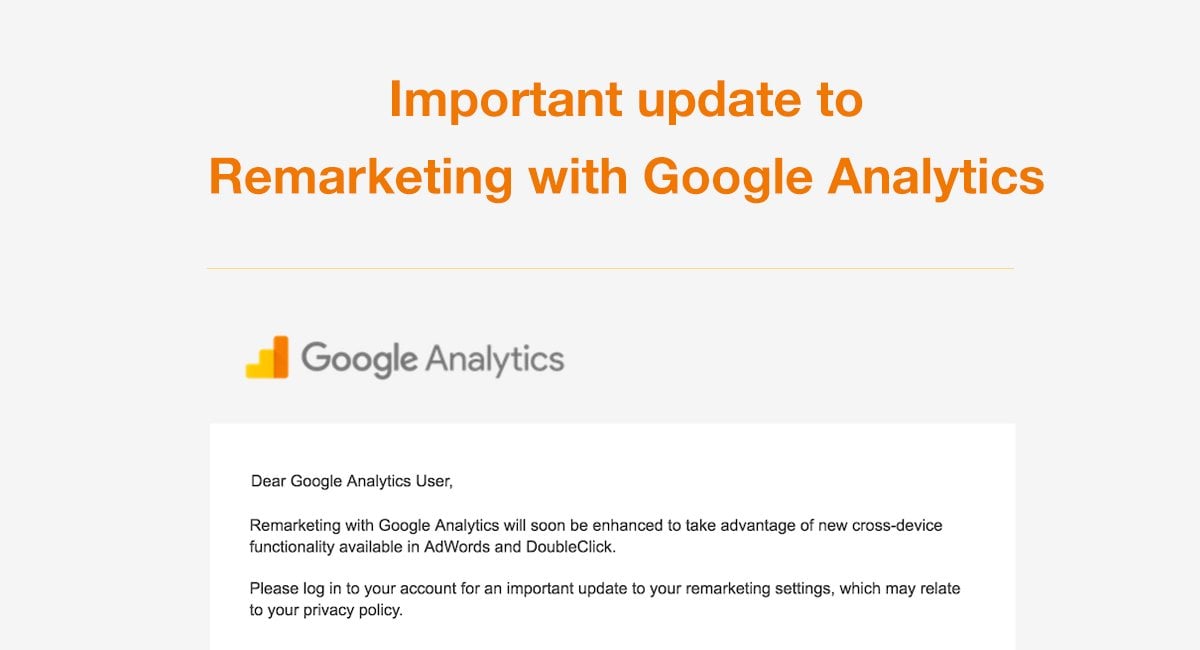Efficient Strategies for Remarketing In Google Analytics
Effective Methods for Remarketing in Google Analytics
In the world of electronic advertising and marketing, the realm of remarketing in Google Analytics stands as a pivotal tool for organizations aiming to enhance their on the internet presence and conversion rates. Via calculated target market division, tailored remarketing lists, and engaging ad creatives, businesses can craft tailored projects that reverberate with their target audience. Nevertheless, real success depends on the capacity to continually improve and enhance these techniques based on efficiency metrics and information insights. By checking out the subtleties of vibrant remarketing and leveraging advanced tracking devices, companies can open the full possibility of their remarketing efforts, bring about enhanced brand name visibility and client engagement.
Target Market Segmentation
Making use of target market segmentation is an essential approach in enhancing the effectiveness of remarketing campaigns within Google Analytics. By splitting your audience into distinctive groups based on their behavior, demographics, or passions, you can customize your marketing messages to be a lot more pertinent and engaging. This strategy enables you to supply personalized ads to details sections, enhancing the likelihood of conversion.

Moreover, target market segmentation helps you comprehend the varying needs and choices of various consumer groups, allowing you to craft even more engaging ad creatives and deals. This targeted approach not only enhances the efficiency of your remarketing initiatives however likewise enhances overall campaign efficiency.
Establishing Remarketing Checklists
To successfully execute remarketing techniques in Google Analytics, the preliminary step includes creating targeted remarketing listings based on details target market interactions. Establishing remarketing listings allows online marketers to segment their website site visitors into different categories based upon their habits, such as pages seen, products looked for, or actions taken on the website. By specifying these segments, marketing professionals can after that create relevant and tailored ads that target these particular teams, increasing the probability of conversion.
Remarketing lists can be established up using numerous requirements such as page sees, period of check out, details objective completions, or even particular occasions activated on the website. This degree of customization makes it possible for marketing experts to tailor their promotions to match the rate of interests and preferences of each segmented target market, leading to greater interaction and conversion rates.
In addition, remarketing listings can also be developed based upon data imported from other resources like CRM systems, enabling much more exact targeting. By establishing these targeted remarketing lists, marketing experts can efficiently reach out to prospective clients who have actually currently shown passion in their services or products, optimizing the influence of their remarketing campaigns.
Creating Engaging Ad Creatives
After segmenting web site site visitors into targeted remarketing lists based upon particular target market communications, the next critical action is to craft engaging advertisement creatives that resonate with each review fractional team's preferences and interests. The efficiency of remarketing campaigns heavily relies upon the capacity of these ad creatives to catch the interest of the audience and drive them to take the wanted activity.
To create compelling advertisement creatives, it is vital to understand the special characteristics of each segmented group (What Is “Remarketing” In Google Analytics?). Tailoring the messaging, visuals, and offers to align with the passions and choices of the audience can substantially enhance the opportunities of conversion. Making use of vibrant ads that automatically readjust web content based upon the user's actions can likewise enhance the personalization of the ad experience

Monitoring Efficiency and Optimization
Efficient monitoring of project performance and continual optimization are critical facets of successful remarketing strategies in Google Analytics. To make certain the performance of remarketing campaigns, online marketers must regularly track essential performance metrics such as click-through rates, conversion rates, and return on advertisement invest. By keeping an eye on these metrics, online marketers can acquire beneficial insights right into the efficiency of their campaigns and recognize areas for renovation.
In Google Analytics, online marketers can utilize tools like conversion monitoring and target market segmentation to examine the efficiency of their remarketing campaigns. Conversion tracking enables marketers to track certain actions that customers take after clicking a remarketing advertisement, giving valuable information on the effectiveness of the campaign in driving wanted end results. Target market division, on the various other hand, allows marketing experts to split pop over to this web-site their target market into different segments based on different standards such as demographics, habits, and rate of interests, enabling more targeted and individualized remarketing efforts.
Constant optimization is vital for making the most of the impact of remarketing campaigns. Marketing professionals need to make use of A/B testing to explore various ad creatives, messaging, and targeting approaches to recognize the most effective strategies. By frequently evaluating project efficiency information and making data-driven optimizations, marketers can make certain that their remarketing projects are achieving the preferred results and driving conversions effectively.
Leveraging Dynamic Remarketing
Utilizing vibrant remarketing can significantly boost the relevance and effect of targeted advertisements in Google Analytics. This sophisticated method permits marketers to show tailored advertisements to individuals who have formerly visited their internet site or utilized their mobile app. By dynamically displaying items or solutions that the customers have actually revealed rate of interest in, vibrant remarketing helps to keep the brand name fresh in their minds and motivates them to return to complete a purchase.

Moreover, vibrant remarketing projects can be automated and enhanced in real-time based on performance data, making certain that the ads stay reliable and appropriate. By leveraging vibrant remarketing in Google Analytics, marketers can create extra impactful and targeted marketing campaign that resonate with their target market and drive results.
Final Thought
In conclusion, effective remarketing strategies in Google Analytics include target market division, targeted remarketing checklists, compelling ad creatives, efficiency surveillance, and dynamic remarketing. By concentrating on customized ads, information analysis, and constant optimization, services can enhance conversion rates and drive involvement efficiently. Leveraging devices like conversion tracking continue reading this guarantees that advertisements continue to be personalized and appropriate, resulting in general success in remarketing initiatives.
Via critical audience division, tailored remarketing checklists, and appealing ad creatives, businesses can craft tailored campaigns that reverberate with their target audience. Using vibrant advertisements that immediately change material based on the individual's behavior can also boost the personalization of the ad experience.
Conversion tracking enables marketing experts to track particular activities that users take after clicking on a remarketing ad, supplying important information on the effectiveness of the campaign in driving preferred end results.Making use of dynamic remarketing can substantially enhance the importance and effect of targeted ads in Google Analytics - What Is “Remarketing” In Google Analytics?.In verdict, efficient remarketing strategies in Google Analytics entail audience division, targeted remarketing lists, engaging ad creatives, performance tracking, and vibrant remarketing